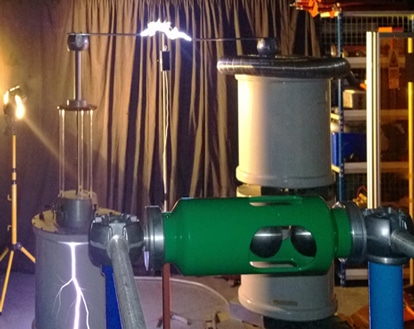A collaborative effort between the University of Southhampton, UK and smartphone manufacturer Nokia has yielded new proof-of-concept research on harnessing the power of lightning to charge electronic devices.
At the university’s Tony Davies High Voltage Laboratory—one of the world’s leading high voltage laboratories—researchers successfully used energy similar to that of a bolt of lightning to charge a Nokia Lumia 925 smartphone.
“We were excited by this challenge presented to us by Nokia. Using an alternating current driven by a transformer, over 200,000 volts was sent across a 300mm gap—giving heat and light similar to that of a lightning bolt. The signal was then stepped into a second controlling transformer, allowing us to charge the phone,” Neil Palmer of the Tony Davies High Voltage Laboratory said.
“We were amazed to see that the Nokia circuitry somehow stabilized the noisy signal, allowing the battery to be charged. This discovery proves devices can be charged with a current that passes through the air, and is a huge step towards understanding a natural power like lightning and harnessing its energy.”
According to Chris Weber, executive vice president for sales and at Nokia, this experiment is the first of its kind attempted any mobile phone company.
“We believe that this experiment has the potential to jump-start new ideas on how we charge our phones in the future,” he said.
“We obviously aren’t recommending people try this experiment at home, but we are always looking to disrupt and push the boundaries of technology and find innovative ways to improve the performance of our products.”





